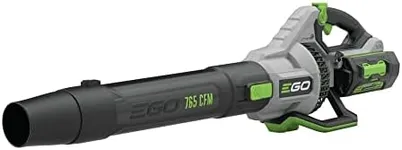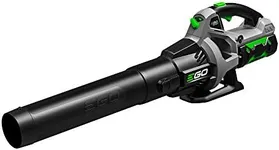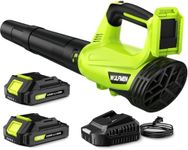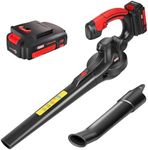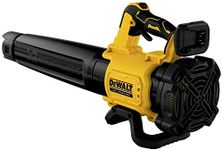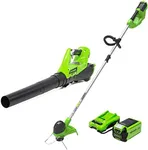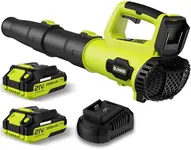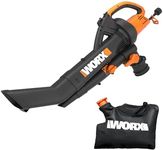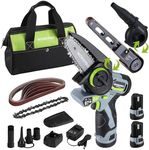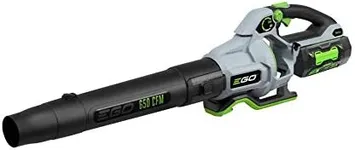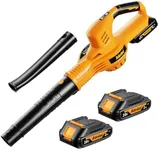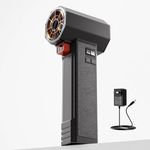Buying Guide for the Best Electric Leaf Blowers
Choosing the right electric leaf blower can make yard work much easier and more efficient. Electric leaf blowers are popular for their ease of use, low maintenance, and eco-friendliness compared to gas-powered models. When selecting an electric leaf blower, it's important to consider several key specifications to ensure you get the best fit for your needs. Understanding these specs will help you make an informed decision and find a model that suits your yard size, type of debris, and personal preferences.Power SourceElectric leaf blowers come in two main types: corded and cordless. Corded models are powered by plugging into an electrical outlet, providing consistent power without the need to recharge. They are ideal for smaller yards or areas close to a power source. Cordless models run on rechargeable batteries, offering greater mobility and convenience, especially for larger yards or areas without easy access to power outlets. However, they may have limited run time depending on the battery capacity. Choose a corded model if you have a small yard and don't mind managing a power cord, or a cordless model if you need more freedom of movement and are willing to recharge batteries.
Airflow (CFM)CFM stands for cubic feet per minute and measures the volume of air the blower can move. This spec is important because it determines how effectively the blower can move leaves and debris. Lower CFM (up to 300) is suitable for light-duty tasks like clearing small patios or driveways. Medium CFM (300-500) is good for average-sized yards with moderate leaf coverage. Higher CFM (500 and above) is best for large yards or heavy-duty tasks with lots of leaves and debris. Consider the size of your yard and the amount of debris you typically need to clear when choosing the right CFM.
Air Speed (MPH)Air speed, measured in miles per hour (MPH), indicates how fast the air is moving out of the blower. This spec is important for determining how well the blower can lift and move heavier debris. Lower air speeds (up to 100 MPH) are suitable for light tasks like clearing grass clippings or dry leaves. Medium air speeds (100-150 MPH) are good for general yard work with a mix of light and heavier debris. Higher air speeds (150 MPH and above) are ideal for heavy-duty tasks, such as moving wet leaves or larger debris. Match the air speed to the type of debris you typically encounter in your yard.
WeightThe weight of the leaf blower is an important consideration for ease of use and comfort, especially if you have a large area to cover or will be using the blower for extended periods. Lighter models (up to 5 pounds) are easier to handle and maneuver, making them suitable for smaller tasks or users who prefer a lightweight tool. Medium-weight models (5-10 pounds) offer a balance between power and ease of use, suitable for most average-sized yards. Heavier models (10 pounds and above) may provide more power but can be tiring to use for long periods. Choose a weight that you can comfortably manage for the duration of your yard work.
Noise LevelNoise level is an important factor to consider, especially if you live in a neighborhood with noise restrictions or if you prefer a quieter operation. Noise levels are measured in decibels (dB). Lower noise levels (up to 60 dB) are quieter and more suitable for residential areas. Medium noise levels (60-70 dB) are common for most electric leaf blowers and provide a balance between power and noise. Higher noise levels (above 70 dB) may be more powerful but can be disruptive. Consider your tolerance for noise and any local regulations when choosing a leaf blower with an appropriate noise level.
Additional FeaturesSome electric leaf blowers come with additional features that can enhance their usability and convenience. These may include variable speed control, which allows you to adjust the air speed for different tasks; a vacuum or mulching function, which can help with collecting and reducing the volume of leaves; and ergonomic designs, such as padded handles or adjustable tubes, for increased comfort. Think about which features would be most beneficial for your specific needs and preferences when selecting a leaf blower.
